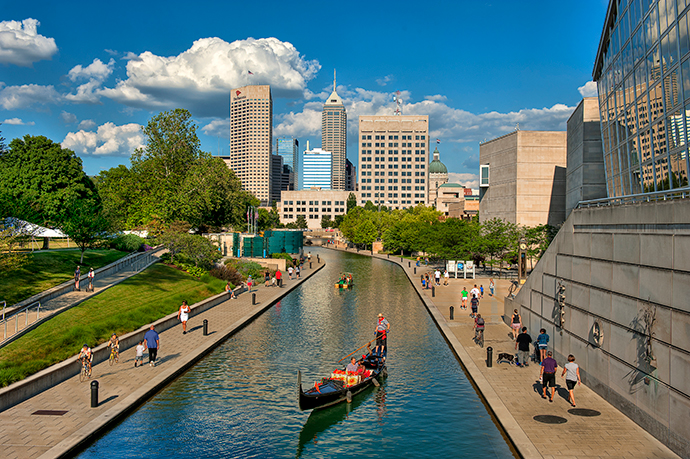Few things make as big an impact in a city as the activation of dormant land. Whether establishing greenspace, building offices or apartments, redevelopment of unused or underutilized property energizes and breathes life into a community. A new project in Indianapolis aims to do just that in a big way.
In November 2015, the Indianapolis City-County Council approved $75 million in tax increment financing (TIF) bonds to help get the ball rolling for 16 Tech, an ambitious 50-acre (20-hectare) technology park and innovation community being developed in downtown Indianapolis on the site of the former water utility. The project calls for up to 6 million sq. ft. (557,418 sq. m.) of live-work-play space; a place where companies can collaborate to commercialize new products and ideas across disciplines in advanced industries, including life sciences, technology and advanced manufacturing.
The Enabler
“16 Tech is a vehicle, a mechanism to draw talent, develop new talent and to retain the great talent we have here in Indianapolis and Indiana,” says Betsy McCaw, president of the 16 Tech Community Corporation, and COO of the Central Indiana Corporate Partnership. “It is a mechanism to be able to continue to enhance that business climate in a talent-focused manner. This project is the key to growth and innovation, long-term sustainability and an enhanced economy, really for the prosperity of everyone.”
McCaw calls the physical real estate, situated on a peninsula jutting out between the White River and Fall Creek, the “enabler.” The property sits along Indiana Ave., one of the diagonals that runs directly out of the downtown core to the northwest, a region of the city with a rich cultural heritage. Proximity to health and higher education assets are key partnerships for 16 Tech. The tech park will sit across Fall Creek from two hospital systems, Eskenazi Hospital and Reilly Children’s Hospital, and minutes away from the Indiana University (IU) medical school and the Indiana University-Purdue University Indianapolis (IUPUI) campus.
“You’re in the downtown core but nestled in an interesting spot,” says McCaw. “There are biking and running paths already on the property and neighborhoods to the north. There’s a lot of green space possible here. It makes for a unique spot to work and live in the city.”
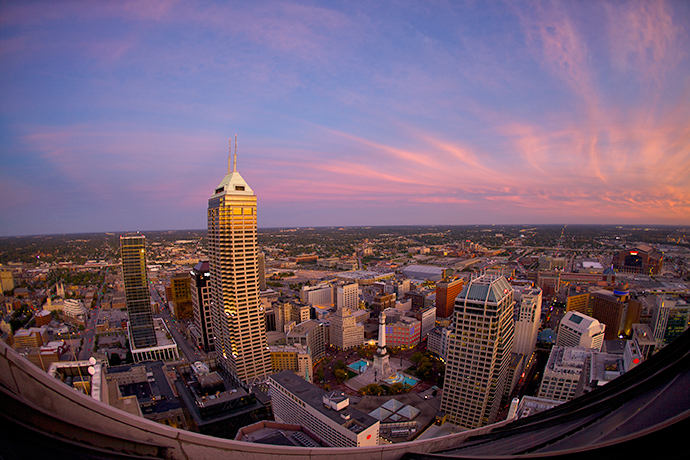
The 16 Tech concept is not new. “Three former mayors have wanted to find ways to activate the site because of its proximity to downtown, those research assets and companies that surround it,” says McCaw. “It’s never been successful in large part for two reasons: It needed an anchor and critical mass.” The project got its anchor in the $350-million Indiana Biosciences Research Institute (IBRI), an organization with the appropriate amount of heft to draw talent, entrepreneurship and research from advanced-industries companies looking for a place to co-locate research.
Plan, Execute and Transform
16 Tech stakeholders began planning in earnest in April 2015, working with an initial developer — Wexford Science & Technology — to create a master plan. Much of 2015 was taken up with negotiations with the city-county government to gain access to the infrastructure dollars required to build out the site. Most of the approved bond money will pay for the cost of removing and relocating water lines, as well as roads, a four-lane bridge and other necessary infrastructure.
“We’re in the very beginning phase of the project,” McCaw says. “We have the basis of a master plan but we’re in the process of working through all those issues with the public agencies of the city. We’re looking at 1918 maps with the water company to make sure we know what’s under where we want to build. We’ll be in the design phase over the next few months, and this time next year we’ll be in the build phase. We’ll have our bridge developed and road network going in, primarily, in 2017, and by late winter or spring 2018 we should have people in buildings walking on new infrastructure.”
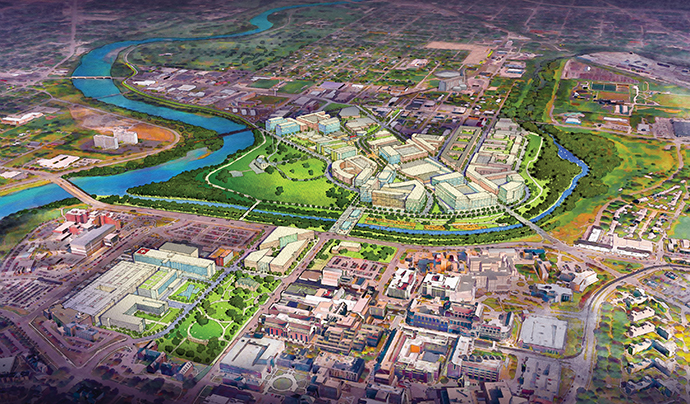
McCaw estimates it will take up to 20 years to get 16 Tech to full development with residential and other amenities. Phase I of the project will take the site up to 2 million sq. ft. (185,806 sq. m.). The master plan is still being tweaked, but McCaw expects Phase II will grow the tech park to between 5 million and 6 million sq. ft. (464,515 sq. m. and 557,418 sq. m.) Research and innovation space will take just over half of the space. “The remainder, in order to create the 24/7 vibrancy and energy for the live, work, play, learn space, includes retail, residential and a hotel,” she says. “The goal and focus is on space that facilitates innovation and the talent creating that innovation.”
The 16 Tech project is taking its cues from other successful innovation districts or parks, looking to organizations like the Brookings Institution for guidance and places like Cambridge, Mass., San Francisco and San Diego, Calif., for inspiration. “There’s clearly been a movement in mid-size US cities to figure out how to create platforms for growth of innovation, talent, in the industries that exist there,” says McCaw. “There are other places like Cortex Innovation Community in St. Louis, or sites in Philadelphia, Baltimore, or Winston-Salem, which have universities driving the activity rather than a research institution and the private sector. Ours is a bit unique in the level of private sector engagement here. They’re doing a lot of the driving of this development in Indianapolis.”
“We all believe that this is a transformational opportunity for the city and the state,” she continues. “It will put us on the map in a different way than we are today, especially with regard to global innovation in many different respects. There is good structure around it already. It’s being embraced in the public, private and philanthropic sectors. It all still has to happen but with all the people looking to make it happen, and the support of the public sectors — mayors, city and county — we believe it will happen.”
The First One In, Wins
The idea of creating a sense of place, whether it’s a technology park or greenspace, in order to attract talent and industry and enhance quality of life is a scenario being played out in smaller Indiana cities. Jasper is a city in the southwestern region of the state that has a strong manufacturing and distribution and logistics base. As the city followed a 2010 comprehensive plan, interesting redevelopment began occurring in the downtown. A number of unused or underutilized factories, some that had been vacant for decades, were bought up to be repurposed for housing and other uses, and the city developed its riverfront.
“One of the great things to come out of all these economic development investments into our community, is that we’ve taken steps to making what I call true quality-of-life initiatives,” says Mayor Terry Seitz. “We are drawing about 6,000 people a day that work in Dubois County but live elsewhere. We’ve been told by the employers here that the quality of our city — the services, the quality of life, quality of place investments — are key to their ability to recruit employees.”
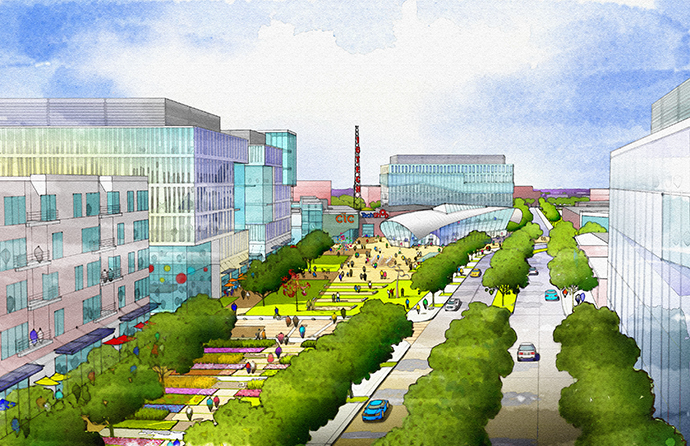
An important quality-of-life issue is connectivity — not just connecting at the riverfront walkway but online. In an effort to get the city and its residents ahead of the technology curve, the leadership of Jasper decided to see what it would cost to create a “gigacity” by bringing gigabit fiber to the entire city. “We did a request for proposal for service to the municipal and utility sectors of our city,” he says. “We had seven respondents. We narrowed it down to four vendors and then we said, ‘If you want to have the City of Jasper and our utilities as a client, we want you to come back to us with how you will build out to the entire community.’ ” It was a bold move. “We had vendors who weren’t happy to be asked,” he says. “We were told we were borderline crazy, but ultimately two companies were interested. We settled on Smithville Fiber.”
In October 2015, Smithville began the fiber buildout, a $7-million private investment using no tax money. “We expect some residential areas to be turned on fully this year and that this process will continue through 2018,” says Seitz. “We didn’t sign contracts with them about terms of service or rates. We figured if a company’s going to invest $7 million in our city, they’ll be competitive with whoever they need to compete with to provide the services. We just felt we needed to get this done. The first one in wins.”
Playing Hardball
In Westfield, a suburb north of Indianapolis, economic development looks a lot like a baseball diamond. Or a soccer field. In June 2014 the Grand Park Sports Campus in Westfield opened for business. The city invested $45 million into the development of the 350-acre (141.6-hectare) sports complex, complete with 26 baseball and softball diamonds and 31 multi-purpose fields. Like many such facilities, the Grand Park complex hopes to tap into the multi-billion-dollar business of youth and amateur sports tournaments and competitions taking place all over the US. City leaders also pegged the sports park to a larger Grand Park Economic Development Area which will eventually include a variety of mixed-use development from hotels and retail to office, light manufacturing and residential areas.
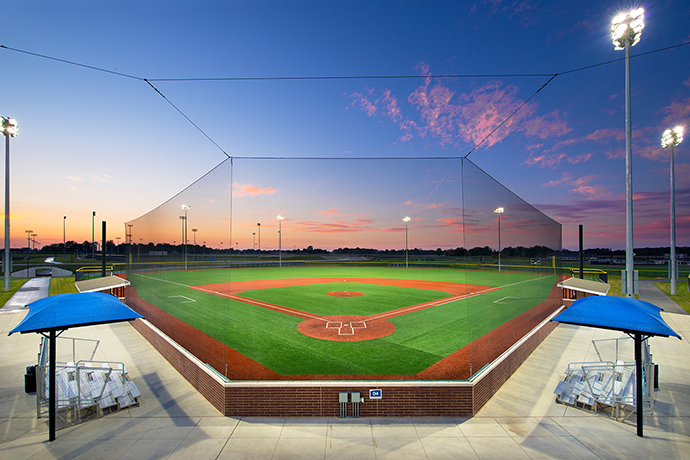
To say the complex achieved its initial goal is an understatement. In February 2016, Grand Park released an independent economic impact report completed by Applied Economics. The facility welcomed close to a million visitors in 2015, just its second year of operations. In 2015, the park’s overall annual economic impact more than doubled from $66.4 million in 2014 to $147.7 million in 2015. Visitor spending rose from $43 million in 2014 to $97.2 million in 2015. Likewise, state sales tax revenues jumped from $2.8 million in 2014 to $6.2 million in 2015.
Westfield Mayor Andy Cook called the figures “validating.” “We always strive to continuously improve, and this shows us that we’re heading in the right direction,” he said. Business generated by the park accounted for 61,970 hotel room nights in the region. Most of the park’s revenue was generated by travel tournaments, but the sports park is used regularly by local sports leagues. Use of Grand Park’s Sports Campus will only increase with the opening of a facility with three full-size indoor multi-purpose fields. A hotel is already under construction at Grand Park.
The ultimate impact of projects like 16 Tech in Indianapolis, Westfield’s Grand Park or Jasper’s gigacity remain to be seen, but they demonstrate that communities are seeing the value in investing in quality-of-life infrastructure with an eye toward drawing talent and industry to their respective regions. “I don’t know if we really understand how this will fundamentally change our community or make our community available for future economic growth,” says Jasper’s Seitz, “But I’m excited.”
Making Cars & Trucks & Things That Go
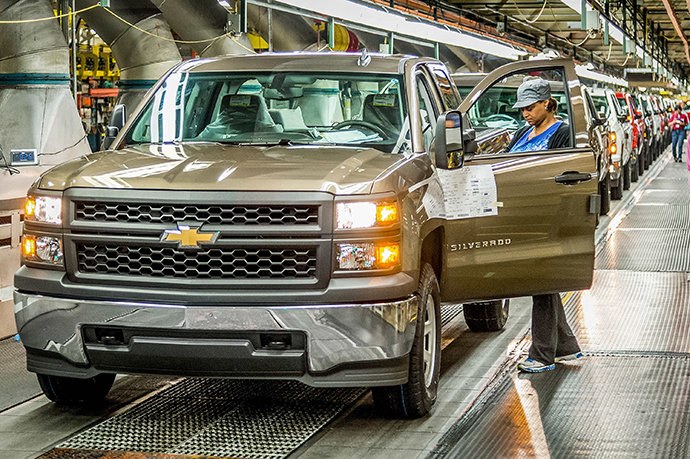
Vehicle manufacturing dominates the state’s 2015 expansions.
Indiana had a year filled with industry expansions and relocations to crow about, but it’s always better when you can let someone else do the bragging. In the January 2016 issue of Site Selection, Indiana’s business climate was ranked no. 1 of all the Midwest states according to the magazine’s annual Site Selectors Survey, and ranked seventh on the overall list of states — the only Midwest state to break the Top Ten. The views of site location professionals was certainly borne out in both the number and scope of projects that settled on the Hoosier State in 2015.
With five OEM assembly plants and more than 500 automotive companies in the state, automotive projects are bound to dominate and 2015 was no exception. Of the top 10 projects tracked in the Conway Projects Database in 2015, all but two were related to the automotive industry. General Motors (GM) set the bar high when the company announced plans to invest $1.2 billion in upgrades to its full-size, light and heavy duty truck plant in Fort Wayne. The expansion adds 1.5 million sq. ft. (139,355 sq. m.), doubling the size of the plant. Construction began in summer 2015 on a new pre-treat, electro-coat paint operation and sealing facility, expanded body shop, and expanded and new material sequencing centers.
That investment was bookended by an additional $127.4 million to fund an expansion in powertrain and structural components to support production of new aluminum engine blocks and components at the company’s Bedford Casting Operations plant. The Bedford facility makes parts used in Chevrolet, Buick, GMC and Cadillac vehicles. The plant currently has 700 employees, with an additional 127 jobs on the way, thanks to the expansion.
Honda Manufacturing of Indiana (HMIN) announced in early 2016 the company’s plans to move production of the popular CR-V SUV from its facility in Guadalajara, Mexico, to its plant in Greensburg, due to a production change at the Guadalajara plant. The Greensburg facility will begin production of the CR-V in 2017. The plant currently produces the Honda Civic — recently named the 2016 North American Car of the Year — and will continue to do so when the additional model is added. HMIN has invested nearly $97 million during the last three years in the Greensburg facility to adopt new manufacturing processes and technologies.
Top 10 Projects
in Indiana by Investment for 2015, US$M
| General Motors Company | 1,200 |
| Rolls-Royce North America Inc. | 600 |
| FCC (adams), LLC | 129 |
| Faurecia Emissions Control Technologies | 73 |
| Chiyoda USA Corporation | 56 |
| Therma-Tru Corp. | 56 |
| Nextgear Capital, Inc. | 51 |
| AM General Holdings LLC | 44 |
| John Morrell Food Group | 44 |
| Hoist Liftruck Mfg., Inc. | 42 |
The AM General plant in Mishawaka that used to produce Hummer SUVs for GM before production shut down during the economic crisis was brought back to life as a contract assembly plant for Mercedes-Benz in August 2015. It was a classic win-win situation for both companies. The AM General plant employed 1,000 workers before gas prices and the Great Recession conspired to all but eliminate the market for Hummers. Meanwhile, the Mercedes R-Class SUV was produced in Alabama, where production space was limited and needed for other more popular models. The R-Class is only sold in China, and Mercedes was loath to lose out on that market. In early 2015, Mercedes entered into a multi-year agreement that moved production of the R-Class from Tuscaloosa, Ala., to AM General. The project created about 200 jobs at AM General. The first R-Class vehicle rolled off the line in August 2015.
“AM General is the global leader in advanced vehicle production and we stand ready to meet the needs of auto companies here in the U.S. and around the world,” said Howard Glaser, president of AM General Commercial.
In the aerospace sector, Rolls-Royce announced its plans to invest $600 million into its Indianapolis manufacturing operations, representing the largest US investment the company has made since 1995. The five-year project will replace outdated facilities and accelerate the introduction of new and advanced manufacturing methods. It will also consolidate operations and significantly reduce utility costs. “This investment ensures that we can increase our competitiveness in the market, which will benefit both our customers and Rolls-Royce,” said Marion Blakey, president and CEO, Rolls-Royce North America.
Rolls-Royce produces engines for a wide range of military and commercial aircraft, as well as marine propulsion systems. In February 2016, Rolls-Royce was awarded a $118-million boost to one of its military contracts. The work, contracted for completion by November 2017, is being done for the Marine Corps and the government of Japan, and will be done in Indianapolis.
Hoist Liftruck, an Illinois-based company, is sliding its manufacturing operations over to East Chicago, Ind., and will create 500 jobs over the next five years in the bargain. The company makes heavy-duty forklifts. Hoist Liftruck is investing $42 million to renovate a 110-year-old building which had stood vacant for a decade.
